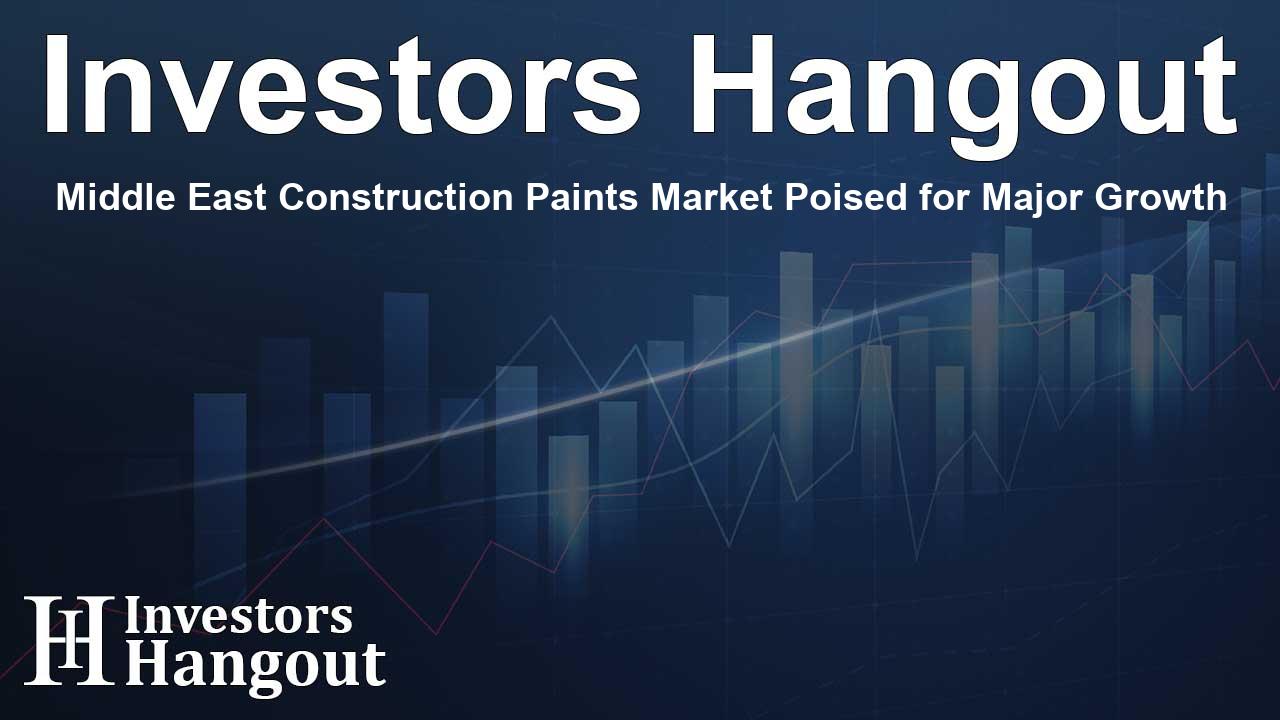Middle East Construction Paints Market Poised for Major Growth

Overview of the Middle East Construction Paints Market
The Middle East's construction paints market is making significant strides and is projected to reach USD 16.4 billion in the coming years. Currently valued at USD 9.7 billion, this growth reflects a compound annual growth rate (CAGR) of 4.9% from 2024 to 2034. This increase is driven by the growing construction sector, urbanization, and advancements in eco-friendly paint formulations.
Understanding Construction Paints
Construction paints are essential materials in the building and renovation sectors. They not only enhance the aesthetic appeal of structures but also provide critical protection against environmental factors. Available in various formulations—water-based, solvent-based, and epoxy—their applications are vast, covering walls, ceilings, floors, and exteriors. The versatility of these paints allows them to serve multiple functions, including weather resistance, mold prevention, and fire retardation.
Growth Drivers in the Market
Several factors contribute to the robust growth trajectory of the Middle East construction paints market. A major driver is the rapid expansion of the construction industry across the region, especially in emerging markets where infrastructure is evolving at a rapid pace. This construction boom entails the need for high-quality paints that meet both durability and aesthetic requirements.
Urbanization Trends
The trend of urbanization continues to soar, prompting the development of new residential and commercial buildings. Growing urban populations necessitate innovative building materials, sparking demand for decorative paints that are visually appealing. Market analysts project a significant rise in the decorative paint segment, which is expected to grow at a CAGR of 5% in the coming years, underscoring the increasing emphasis on aesthetics and design in construction projects.
Focus on Sustainability
There is a noticeable shift towards sustainability and energy efficiency in construction. Consumers and builders alike are gravitating towards environmentally responsible options, such as low-VOC (volatile organic compounds) paints. Manufacturers are adapting to this demand by creating formulations that are both health-conscious and eco-friendly, effectively addressing regulatory standards and consumer preferences.
Regional Insights on Market Dynamics
The Middle East construction paints market shows varied dynamics influenced by rapid infrastructure projects and regional developments. Countries like the UAE, Saudi Arabia, and Qatar are currently leading in construction activities, propelled by significant government investments in mega-projects such as smart cities and improved transportation systems. This progressive landscape boosts demand for high-quality construction paints.
Impacts of Urban Expansion
As urban centers continue to flourish, the demand for residential and commercial properties grows. Urban development demands paints that are both aesthetically pleasing and protective against the region's harsh climates. Weather-resistant and UV-stable paints are particularly essential as they ensure longevity and minimize long-term maintenance costs for property owners.
Market Segmentation
The Middle East construction paints market is segmented based on resin types such as acrylic, polyurethane, and epoxy, along with technology types like water-based and solvent-based paints. Additionally, applications range from interior to exterior and specialty coatings for wood and other surfaces.
Key Players in the Industry
Some prominent players in the Middle East construction paints industry include National Paints, Jotun, and Sherwin-Williams, among others. These companies are at the forefront, driving innovation and quality standards within the market.
Conclusion
The Middle East construction paints market stands on the brink of substantial growth, fueled by urbanization, sustainability trends, and a flourishing construction sector. As the region evolves, the demand for innovative and high-quality paints will undoubtedly rise, marking a transformative period for the industry.
Frequently Asked Questions
1. What is the projected market size of the Middle East construction paints industry?
The market is expected to reach USD 16.4 billion by 2034, growing at a CAGR of 4.9%.
2. What factors are contributing to market growth?
Factors such as urbanization, increased construction activities, and sustainability trends are driving the market.
3. Who are the key players in the construction paints market?
Key players include National Paints, Jotun, and Sherwin-Williams.
4. What types of paints are popular in the construction industry?
Popular paints include acrylic, polyurethane, and environmentally friendly low-VOC options.
5. How is urbanization impacting the construction paints market?
Urbanization leads to increased demand for residential and commercial buildings, necessitating high-quality decorative paints.
About Investors Hangout
Investors Hangout is a leading online stock forum for financial discussion and learning, offering a wide range of free tools and resources. It draws in traders of all levels, who exchange market knowledge, investigate trading tactics, and keep an eye on industry developments in real time. Featuring financial articles, stock message boards, quotes, charts, company profiles, and live news updates. Through cooperative learning and a wealth of informational resources, it helps users from novices creating their first portfolios to experts honing their techniques. Join Investors Hangout today: https://investorshangout.com/
Disclaimer: The content of this article is solely for general informational purposes only; it does not represent legal, financial, or investment advice. Investors Hangout does not offer financial advice; the author is not a licensed financial advisor. Consult a qualified advisor before making any financial or investment decisions based on this article. The author's interpretation of publicly available data shapes the opinions presented here; as a result, they should not be taken as advice to purchase, sell, or hold any securities mentioned or any other investments. The author does not guarantee the accuracy, completeness, or timeliness of any material, providing it "as is." Information and market conditions may change; past performance is not indicative of future outcomes. If any of the material offered here is inaccurate, please contact us for corrections.